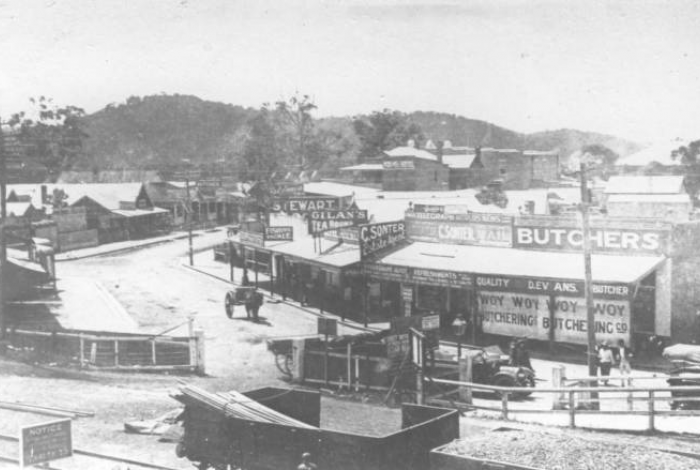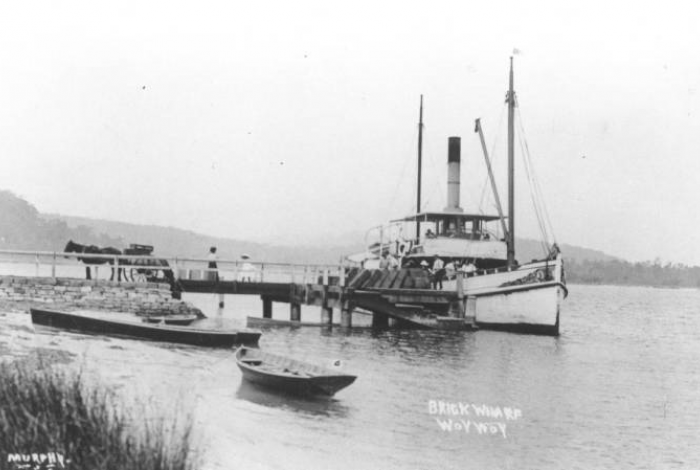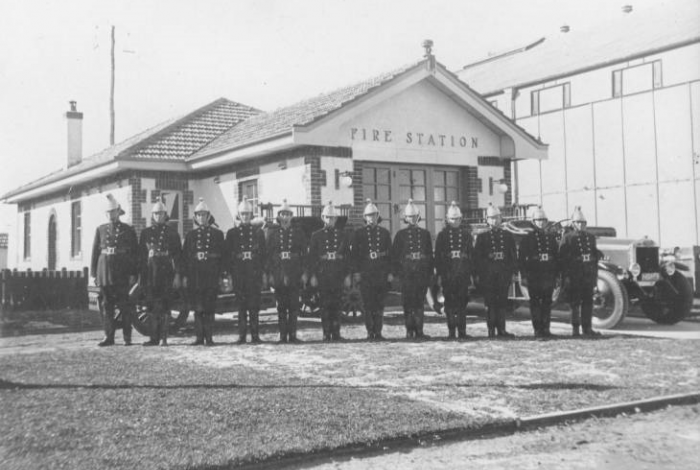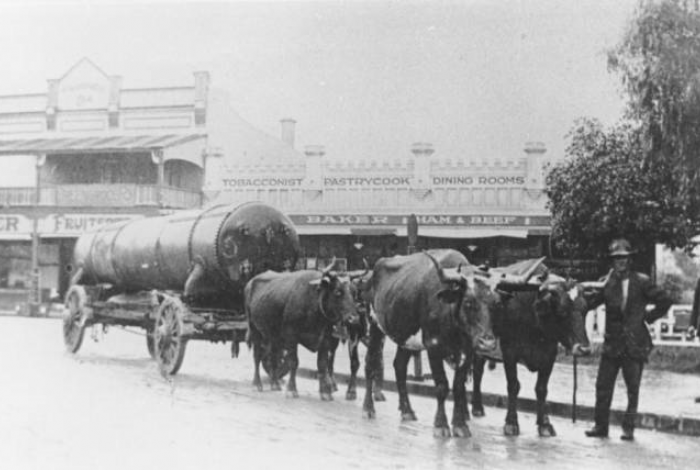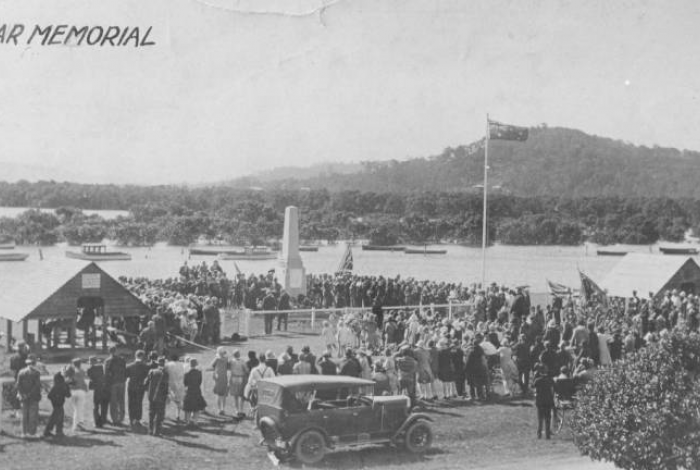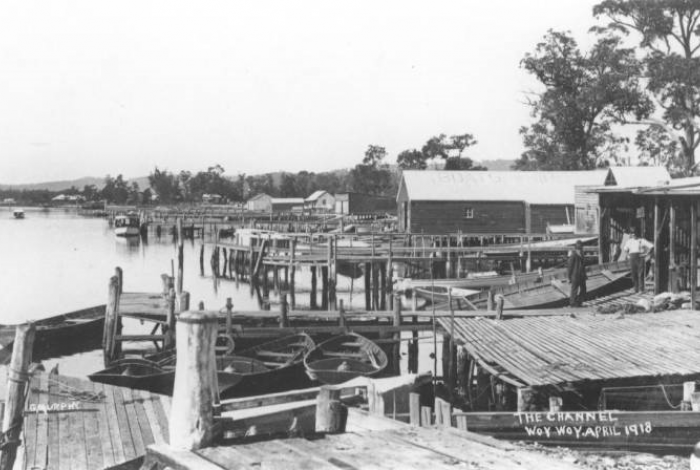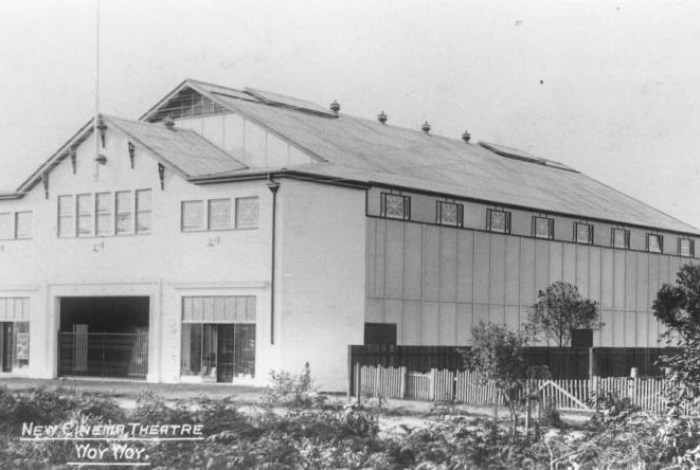Woy Woy
The Let's Talk Woy Woy event provided an opportunity for Council to discuss with the community existing places of heritage significance. It also provided a time and place to discuss what other places, which are currently not protected, the community values and would like conserved for the future.
The nominations received during the Let's Talk Woy Woy event have been compiled and will be reviewed and assessed as part of the broader Central Coast Council Heritage Study and Nominations Review. This study, being conducted by an independent heritage consultant will review all heritage nominations made since the last heritage study and make recommendations on which ones meet the criteria for formal heritage listing.
We will be seeking feedback on other areas across the Coast soon.
Document Library
Doc View
What is heritage?
We all have a connection to heritage. It is a reminder of where we have come from, the things that have influenced the lives of our forebears, us and the community we live in.
Our cultural and natural heritage includes places and landscapes of historic, social, spiritual, archaeological, architectural or aesthetic significance. It includes Aboriginal, Natural and Historic places and items that are valued by our community and demonstrate the unique history of the Central Coast area. The heritage significance of an item includes all the values that make it special to past, present, and to future generations. Items, places and areas may include Aboriginal sites, public buildings, private houses, archaeological sites, bridges, roads, cemeteries, churches and schools, parks and gardens, trees, memorials, lookouts and natural areas.
Why does Council prepare Heritage Studies?
Local government has a responsibility for local heritage under two main acts being the Heritage Act 1977 and the Environmental Planning and Assessment Act 1979. Together these acts establish the legislative framework for heritage management in New South Wales and ensure that heritage forms an integral part of the planning system.
Listing is the way our heritage places are identified and managed. Heritage listing ensures that the heritage significance of a place or item is considered as part of the planning and development of that place.
What does Heritage listed mean?
New South Wales has two main types of heritage listings known as either a “heritage item” or a “heritage conservation area”. Heritage listings flag to owners, land managers, consent authorities and the community that a place or object has been identified as having heritage significance.
There are four main levels of statutory heritage listing in Australia. These are Local, State, National and World Heritage. Most heritage items in Australia are assessed as having local significance. In NSW these are identified on the local Council’s Local Environmental Plan.
When an item or site is listed as being of local or state heritage significance, special rules apply in relation to undertaking development in, on or around the item or site. These rules are designed to support the conservation of the heritage item, as well as the significance of the item, including its setting, materials and views.
For Woy Woy these rules are defined in clause 5.10 of the Gosford Local Environmental Plan 2014. Generally, these rules require development consent for any works, alterations or additions, or demolition of heritage items or sites. In most cases, such works require a heritage impact assessment to be undertaken to support the proposed development.
In some instances, development consent may be granted for a use of a heritage listed building or site where it promotes the conservation of a heritage item or site, where the purpose or use would ordinarily be prohibited by Gosford Local Environmental Plan 2014. This often requires the preparation and implementation of a heritage management plan to ensure the ongoing conservation of the item or site.
What are the heritage items currently listed in Woy Woy?
There are 17 Heritage Items listed in the Woy Woy area, identified in Schedule 5 of the Gosford Local Environmental Plan 2014. Of these, there is one state listed item, being the Woy Woy Railway Tunnel.
The local heritage items include (but are not limited to) Noonan’s and Mrs Wilsons shops (on Blackwall Road and Railway Street respectively), the Bayview Hotel as well as the Fire station (and residence) and the former Council chambers.
There is one local Archaeological Heritage site, being the site of the brickwharf, adjacent to the reserve at the eastern end of Brickwharf Road
The listing for all items within the Woy Woy locality is in the table below:
How do I get something in Woy Woy Heritage listed?
The best way to get a potential item heritage listed is to fill in the heritage nomination form and return it to the Heritage Officer at Central Coast Council. The nomination form is based on the one supplied by Heritage NSW, Office of Premier and Cabinet. The nomination form is quite detailed but not all of the fields need to be filled in to make a nomination Vital information however includes the address of the item, what the potential item is, and photos if available, it is very important to state clearly why you think the item is special and deserves protection.
The Heritage Officer is available to help with the nomination process and can also supply some information on the assessment criteria used to determine whether the item is significant
How will my nomination be assessed to determine heritage significance?
All nomination received will be reviewed by the Council’s heritage officer and by an independent heritage consultant who will be conducting the heritage study. From this the heritage consultant will make a list of potential heritage items recommended for heritage listing. Consultation with then be initiated with asset owners and managers of any potentially affected properties to ensure that we have the correct information and to discuss the owners future plans for their property. A final list of recommended potential heritage items will be determined by the Councillors at a Council meeting.
What are the rules for Heritage listed items?
When an item or site is listed as being of local or state heritage significance, special rules apply in relation to undertaking development in, on or around the item or site. These rules are designed to support the conservation of the heritage item, as well as the significance of the item, including its setting, materials and views.
These rules are defined in clause 5.10 of the Gosford Local Environmental Plan 2014. Generally, these rules require development consent for any works, alterations or additions, or demolition of heritage items or sites. In most cases, such works require a heritage impact assessment to be undertaken to support the proposed development.
In some instances, development consent may be granted for a use of a heritage listed building or site where it promotes the conservation of a heritage item or site, where the purpose or use would ordinarily be prohibited by Gosford Local Environmental Plan 2014. This often requires the preparation and implementation of a heritage management plan to ensure the ongoing conservation of the item or site.
Can I alter my building or property if it is heritage listed?
Heritage listing allows for sympathetic development of the item through an approvals process. This process ensures that any changes to the item or place do not adversely affect the heritage significance of the item.
Changes are assessed on their merits when owners submit development applications. In most instances it is the Local Council that assesses whether a development application will have an acceptable impact on the heritage item. Owners also have the opportunity to submit their own assessment of the potential impacts as part of the development application.
Is a Development Application necessary for repairs and maintenance?
Minor works and day to day repairs and maintenance rarely need approval via a development application as they would normally meet criteria for a heritage exemption under Section 5.10(3) of the Local Environmental Plan. This is especially so for building works that do not change the appearance of the building or involve replacing “like with like”. It is advised however to discuss your proposed works with Council’s Heritage Officer who will be able to identify the appropriate level of consent.
Can I demolish the building if my property is heritage listed?
Although it would be unusual, heritage listing does not prohibit the demolition of a building. It does however mean that the demolition of the building would need to go through a development application process. This process would identify impacts of demolition on the heritage significance of the property and the contribution of the building to the streetscape or place.
Can I renovate or modernise my home if it is heritage listed?
In most situations this is permissible. While the internal layout of a building can be associated with the age and architectural style of a building, it is recognised that people do need to live in them and have a need for contemporary fittings and spaces that facilitate our modern lifestyles. In this regard it is generally acceptable to have new kitchens and bathrooms or to modernise room configurations. This will vary however from property to property so it is best to discuss with the Heritage Officer who can assist with options that will minimise impact on the significance of the property.
Can I extend my house?
Heritage listing does not prohibit extensions to a building or dwelling. Sympathetic development is acceptable as long as the changes retain the heritage significance of the property. The changes will be assessed on their merits when owners submit development applications.
Seeking early advice from the heritage officer will assist you in designing an extension that is sympathetic to the identified heritage significance of the building and its setting, as well as meeting your needs.
My house isn’t old or big so why is it important?
Heritage listing can apply to items that are relatively new or of modest size and architectural design. A heritage item can tell you the story of a place and its development. These stories are different for each area, town or region and it is important that we have physical reminders of these stories in our environment. For example the development history of the Central Coast is very different to that of Sydney or Newcastle. This is reflected then in the types of heritage we have protected and the unique character of each of the areas.
How will heritage listing affect the value of my property?
Studies have shown that generally listing has no effect on property value, or can increase the value of the property. Listed residences with well-maintained heritage features have been found to attract a price premium compared to equivalent non-listed places in independent studies. Period features and other heritage attributes often feature prominently in property advertisements because of this appeal.
For more information refer to:
https://www.stateheritage.wa.gov.au/docs/local-government/syndeyresearchhousingmarket.pdf?sfvrsn=2
Will I be able to sell my house?
Heritage listing does not stop you from selling your house. Neither does it prevent you from renting the property out.
What assistance is available?
Council offers a free heritage advisory service to owners and managers of heritage properties. This service can provide information on heritage conservation, development of heritage properties and the consent process.
Council also facilitates a heritage grants scheme which offers financial assistance for heritage projects up to $5000 per annum. More information on the grants program can be found at:
http://www.gosford.nsw.gov.au/community/grants-programs/heritage-grants-program
